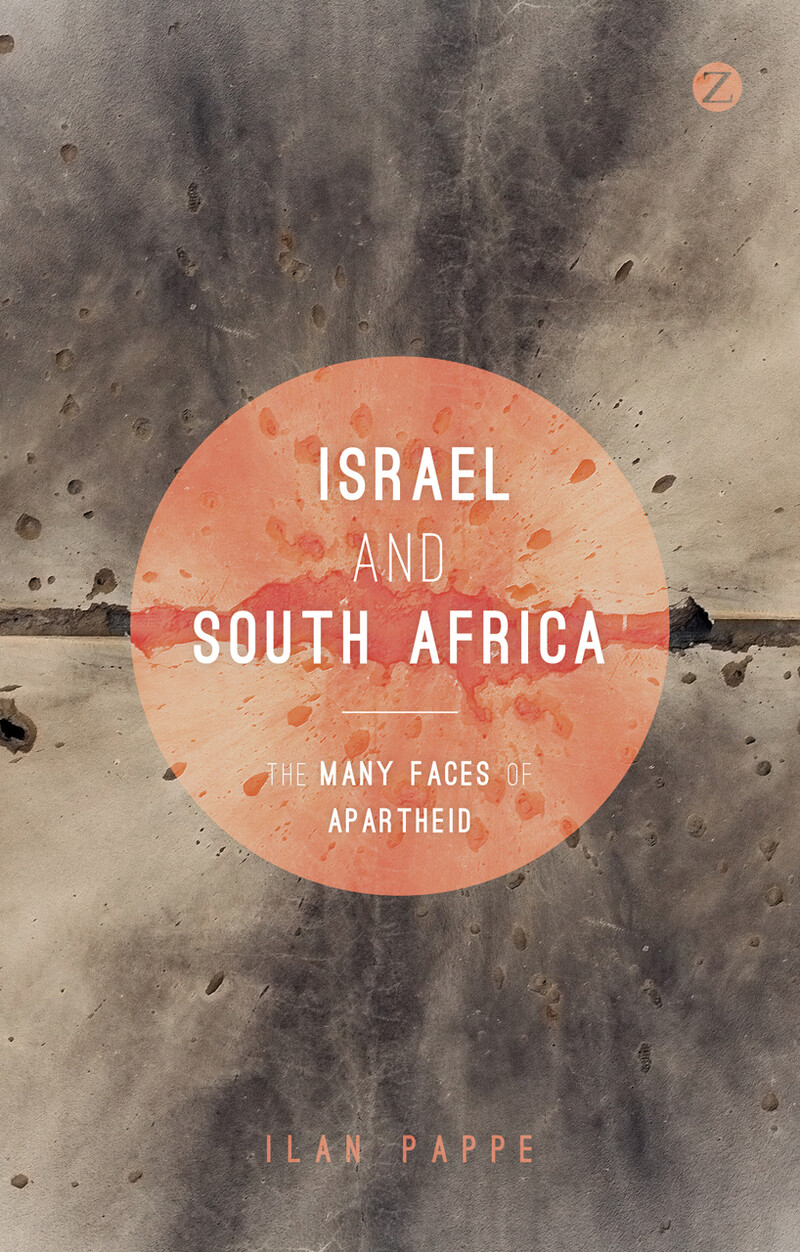The Electronic Intifada 26 October 2016

Israel and South Africa: The Many Faces of Apartheid, edited by Ilan Pappe, Zed Books (2015)
Israel and South Africa: The Many Faces of Apartheid, a collection of essays edited by historian Ilan Pappe, takes for granted the validity of the assertion that Israel is an apartheid state.
Instead, what this book explores are the similarities and dissimilarities between Israel today and South Africa during its apartheid era.
Pappe claims that understanding the historical roots of these commonalities and differences is essential to realizing why Israeli apartheid is of “a special type” and has been more difficult to overcome.
While the book opens with essays that provide overwhelming evidence of the apartheid nature of the Israeli state, it concludes with several essays suggesting why new perspectives are needed to defeat this special type of apartheid.
The overlap and differences between Israeli and South African apartheid became apparent in a single year, 1948. That year the white minority South African government proclaimed apartheid (Afrikaans for “apart” or “separate”) to be official state policy, establishing laws that rigidly separated whites from the Black majority while claiming 87 percent of the land for whites.
The same year a minority settler-colonial population officially proclaimed the establishment of a Jewish state. Israel’s foundation involved the expulsion of 750,000 Palestinians, with the explicit aim of establishing an overwhelming Jewish majority – on more than three-quarters of the land – while rigidly separating itself from the newly created Palestinian Arab minority.
South African apartheid lasted until 1994 when Black majority rule was achieved following an international boycott that included sanctions imposed by US Congress. Yet Israel’s form of apartheid persists to this day and Israel is even accorded the status of a “special relationship” with the US government.
Why? The essays in this book suggest that it’s precisely the differences in the two types of apartheid that help account for this persistence.
The commonalities have by now become obvious. The book presents overwhelming evidence that both Israel and South Africa violated the International Convention on the Suppression and Punishment of Apartheid. Approved by the United Nations in 1973, it established a universal definition for this crime against humanity.
Both countries were established as settler-colonial states. Both were ethnocentric states, and both created Bantustans or zones of limited autonomy for the oppressed indigenous population.
Less examined are the differences.
Labor
As Ronnie Kasrils, a leading member of the African National Congress during the apartheid era, points out in his essay, South African settler-colonialism sought to exploit the labor of the indigenous African majority while Zionist settler-colonialism sought to exclude and expel the native Palestinians.
Apartheid South Africa’s attempt to keep Blacks in Bantustans failed because its economy was dependent on Black labor. Israel, on the other hand, “sought to rid itself of the Palestinian workforce on its doorstep.”
Having established an overwhelming Jewish majority through the expulsion of hundreds of thousands of Palestinians, Israel allowed its Palestinian minority the right to vote. This attempt at “visible equality,” journalist Jonathan Cook’s phrase in his chapter, helped disguise Israel’s special type of apartheid.
Although Palestinian citizens of Israel were able to vote, Cook notes, their vote was meaningless because any Palestinian political party had to accept the framework of a Jewish state and no Palestinian political party was ever invited into a governing coalition.
Likewise, some of Israel’s high court decisions have attempted to promote a veneer of “visible equality,” but Cook offers devastating evidence of the apartheid nature of Israel even inside the 1949 armistice line separating it from the West Bank and Gaza Strip.
Ironically, yet another reason for the persistence of Israeli apartheid lies in the fact that the Bantustan approach, unlike in South Africa, succeeded in Israel, argues Leila Farsakh, a professor of political science at the University of Massachusetts. Through the Oslo accords signed by Israel and the Palestine Liberation Organization in the mid-1990s, Farsakh maintains, Israel succeeded in “legitimizing” the whole notion of “separateness,” or apartheid, by attempting to frame it in “nationalist rather than racial terms.”
Shifting the struggle
Farsakh details four main ways in which Israel manipulated the accords to impose a Bantustan solution and confine Palestinians “in territorially fragmented areas that are unviable economically and politically.”
Farsakh’s insights set the stage for the concluding essays in this volume which attempt to suggest new perspectives and strategies of resistance that will finally bring an end to Israel’s apartheid system.
Steven Friedman, a South African academic, finds the greatest similarity lies in challenging the very notion of ethnocentric states.
The Afrikaner elites, he argues, eventually concluded that South Africa could no longer continue as an ethnocentric state. This came about due to the internal contradictions of the South African system and the external pressure of boycott, divestment and sanctions.
The ethnocentric State of Israel now faces the same dilemma, Friedman writes, and a two-state solution cannot rescue it. If two such states existed on truly equal terms, Friedman notes, their interdependence would soon become apparent and the perceived need for two states would quickly dissolve.
Virginia Tilley, a US-based political scientist, suggests a similar approach in highlighting how international law has both enabled and undermined Israeli settler-colonialism.
She calls attention to the UN partition plan of November 1947, showing how the plan aimed to create two states based on ethnic population majorities but also insisted on equal rights in both states.
Subsequent UN decisions, notably General Assembly resolution 194, recognized the right of Palestinian refugees to return, effectively negating the notion of an ethnocentric state like the one Zionism created in Israel.
Tilley notes that shifting the Palestinian struggle to a framework of equal rights for all aligns it with the approach taken by the African National Congress in South Africa, although she worries that it also sacrifices the Palestinians’ right to national self-determination.
The essay by Ran Greenstein – a sociologist working in South Africa – closes the book by examining what the future may hold. Israel’s special type of apartheid, he concludes, is becoming increasingly “unstable” due to its internal contradictions and external pressure.
He points to the growing Palestinian minority within Israel, the ability of its political representatives to unite around a joint list of election candidates, and its democratic vision of a “state of all its citizens.” Israel’s de facto annexation of the West Bank contradicts its goal of a Jewish demographic majority and further erodes its international support.
Greenstein embraces a bi-national solution that he says is likely to come in stages rather than all at once.
There is a rich accumulation of material and ideas presented in the 10 essays that make up this book. Yet, as valuable as the book is, it points to the pressing need for additional historical and analytical accounts of why Israeli apartheid continues to elude accountability.
Rod Such is a former editor for World Book and Encarta encyclopedias. He lives in Portland, Oregon, and is active with the Occupation-Free Portland campaign.






Comments
Israel and South Africa: Ilan Pappe
Permalink John Webster replied on
Why is there no link for this book showing where it can be bought etc?
We Moral Jews, who are
Permalink Lilly Dashe Muenster replied on
We Moral Jews, who are Ethical Non-Zionists, will live safer in the entire world, with more respect and dignity when Zionism, as with ALL forms of racist Fascism, is vanquished. Israel has a right to exist, but NOT on stolen land. Palestinians are Freedom Fighters, just as we Polish Jews fought and destroyed the German Nazis of WWII. It is the same racism, same theocratic bigotries, and incredibly evil genocide against the peoples who were conquered......Zionism is a greedy, inhumane, pernicious Evil. The vast majority of World Jewry are NOT, NOT Zionists.
Very refreshing to hear this
Permalink Sam Barbary replied on
Very refreshing to hear this response. You are absolutely right.
Solidarity with you, Lilly
Permalink Duniya replied on
The vast majority of Muslims are not Taliban/al-Qaeda/ISIS and the vast majority of Hindus are not Hindutva nationalist fascists. I am a Hindu who opposes Hindu fascism and stand in solidarity with you and the millions of Jews of conscience around the world who are resisting this hijacking of their religion by fascists. Nothing is more anti-Semitic than Zionism!
"Israel has a right to exist"?
Permalink Ted replied on
To write that "Israel has a right to exist" and then to say that "zionism is a greedy, inhumane pernicious Evil" is a major contradiction and failure to understand the true nature of the zionist entity.
There you go! Driving
Permalink Mark replied on
There you go! Driving supporters away from you and wondering why the situation persists. Don't be fooled by the thought that people all over the world cannot see through sophistry.
Bravo for daring to speak out
Permalink Ben Barka replied on
Bravo for daring to speak out and expose the lies. Kudos to you